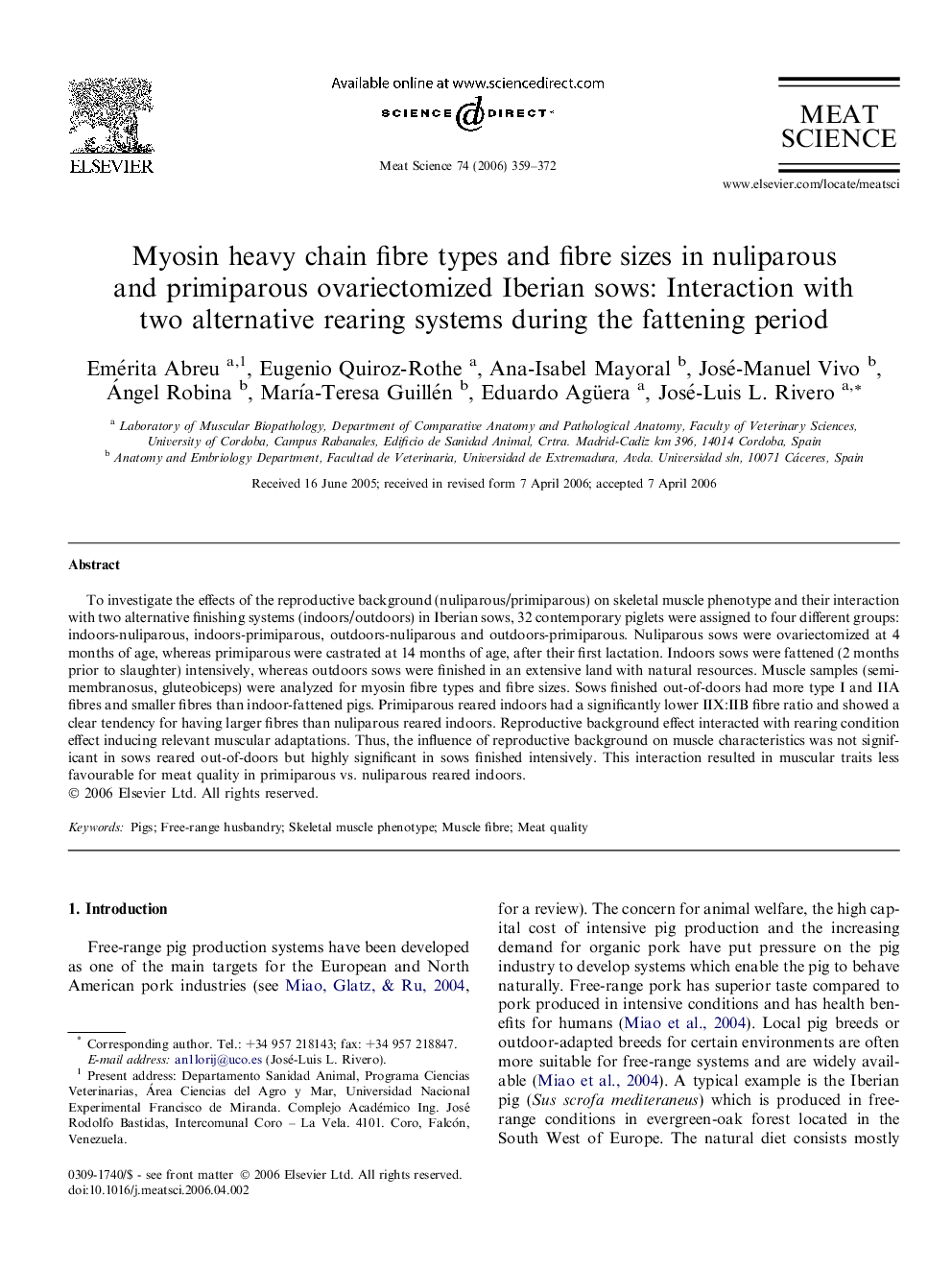| Article ID | Journal | Published Year | Pages | File Type |
|---|---|---|---|---|
| 2452165 | Meat Science | 2006 | 14 Pages |
To investigate the effects of the reproductive background (nuliparous/primiparous) on skeletal muscle phenotype and their interaction with two alternative finishing systems (indoors/outdoors) in Iberian sows, 32 contemporary piglets were assigned to four different groups: indoors-nuliparous, indoors-primiparous, outdoors-nuliparous and outdoors-primiparous. Nuliparous sows were ovariectomized at 4 months of age, whereas primiparous were castrated at 14 months of age, after their first lactation. Indoors sows were fattened (2 months prior to slaughter) intensively, whereas outdoors sows were finished in an extensive land with natural resources. Muscle samples (semimembranosus, gluteobiceps) were analyzed for myosin fibre types and fibre sizes. Sows finished out-of-doors had more type I and IIA fibres and smaller fibres than indoor-fattened pigs. Primiparous reared indoors had a significantly lower IIX:IIB fibre ratio and showed a clear tendency for having larger fibres than nuliparous reared indoors. Reproductive background effect interacted with rearing condition effect inducing relevant muscular adaptations. Thus, the influence of reproductive background on muscle characteristics was not significant in sows reared out-of-doors but highly significant in sows finished intensively. This interaction resulted in muscular traits less favourable for meat quality in primiparous vs. nuliparous reared indoors.
